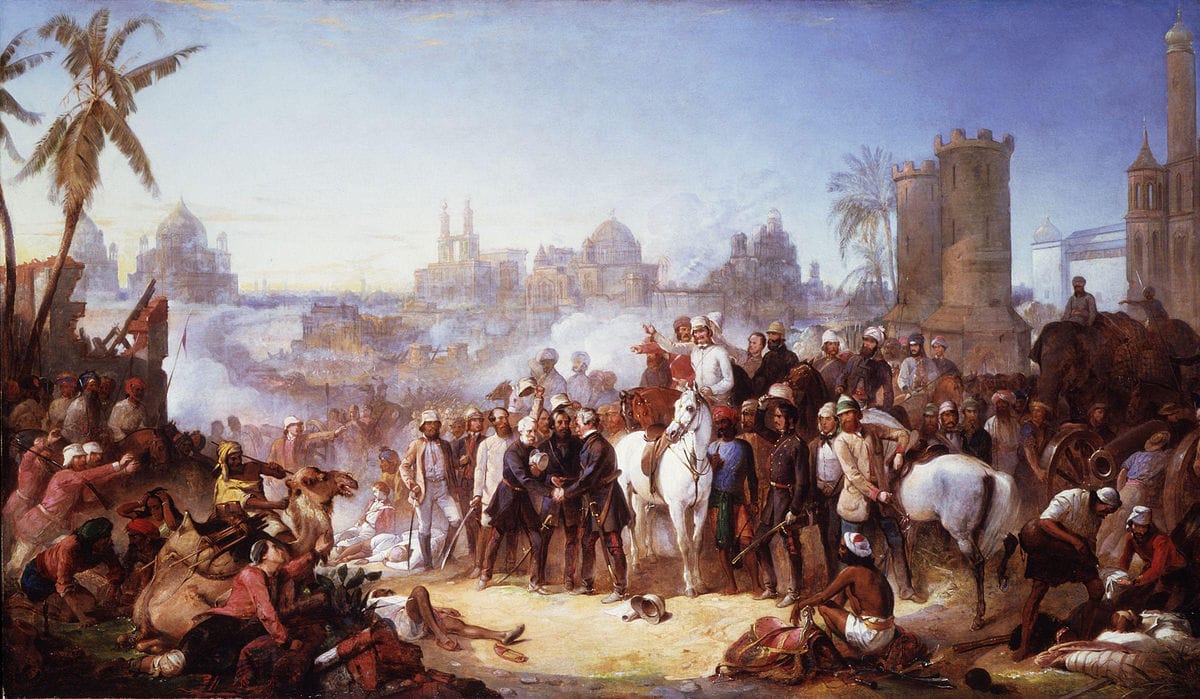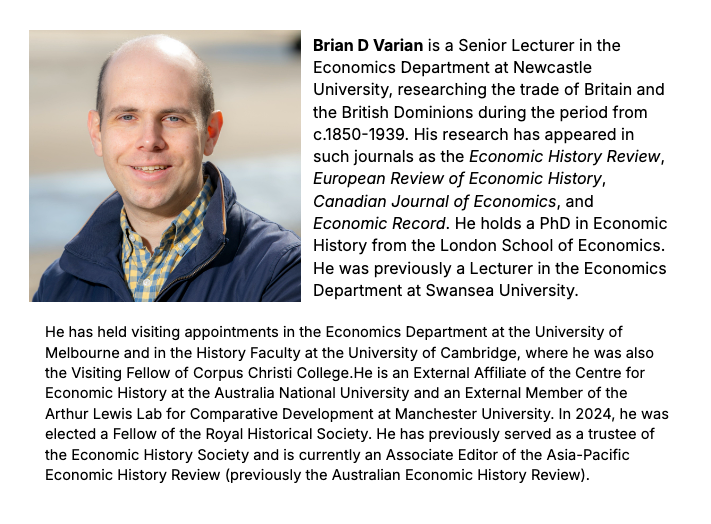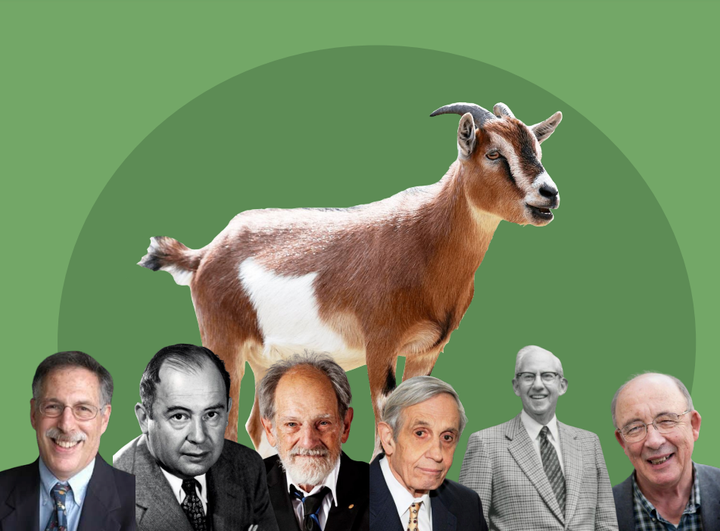An Introduction to the Discipline (or Field) of Economic History
Is economic history part of economics or a separate field? How did economic history develop, and what were its key milestones? What are the types of economic historians, and how do they differ?

By: Dr Brian D Varian
Some would contend that economic history is not a field of economics at all. Since the nineteenth century, there has been an uneasy co-existence between economic history and economics (and between economic history and history). Economic history occupies a space at the boundary between the social sciences and the humanities—and both have laid claim to it at various times. In this article, we first broach the question: is economic history a field of economics or is economic history its own discipline? The status of economic history today is the outcome of a lengthy, ebb-and-flow development of the discipline/field. One cannot appreciate the status and nature of economic history today without some understanding of the history of economic history. Thus, this article begins with a very brief recounting of the development of economic history, before proceeding to describe the current state of the discipline—I must admit that, despite being in an Economics Department myself, I have some sympathies with the separate discipline camp!—and its importance, even if its importance has yet to be sufficiently embraced by the public. However, from the outset, I wish to qualify the discussion that follows: it is a largely (but not exclusively) Anglocentric one. This is not as much of a problem as it might seem, especially considering the leading role of England in the development of the discipline of economic history. Still, it must be acknowledged that the history and present reality of the discipline of economic history varies from country to country [1].
The origins of economic history can be traced to the nineteenth-century German Historical of Economics, which took an inductive approach to the study of economics (Tribe 2003, pp. 215-16). The inductive approach involves drawing economic generalisations from particular episodes—and these episodes were historical. In contrast, the deductive approach involves going from the general to the particular, i.e. the application of theory. The German Historical School dominated the study of economics in Germany until the interwar era. Some of its most famous practitioners included Friedrich List, the intellectual father of protectionist trade policies, and Max Weber, whose argument that Calvinistic Protestantism shaped modern economic development hovers in the background of so much scholarship in the social sciences (List 1841; Weber 1904-1905 / 1930). There was an intellectual current from the German Historical School to the English Historical School. Within the English Historical School, prominent were William Ashley, William Cunningham, and Arnold Toynbee (Tribe 2003). The economic phenomenon of the Industrial Revolution was high on the research agenda. However, unlike in Germany, there was a rich tradition of deductive economics in England (and Scotland). This was the land of Smith and Ricardo, Jevons and Marshall. Especially with Marshall and the Marginalist Revolution, economics took a rather mathematical turn in England.
It might be said that the Marginalist Revolution most marginalised the English Historical School. It was during the early twentieth century that the English Historical School began to conceive of itself as a separate discipline: economic history. Economic history acquired the institutional apparatus of a separate discipline: the first full-time lectureship in economic history was created in 1904; the first chair in economic history was created in 1910; a freestanding economic history department was founded at the London School of Economics; the Economic History Society, the first learned society dedicated to the subject, was founded in 1926; and the Society began publishing the Economic History Review, the first journal dedicated to the subject, in 1927 (Harte 2001) [2].
Economic history’s departure from the household—literally, given that ‘economics’ incorporates the Greek word for household—was not without controversy. While those at the London School of Economics favoured economic history as a separate discipline, those at Cambridge (mainly Keynes) sought to retain economic history within the discipline of economics. By then the doyen of British economists, Keynes interpreted the creation of the Economic History Review as an affront—an affront that required a sharp response. A somewhat amusing story is that Keynes, who was then the editor of the Economic Journal, established an annual supplemental issue of the journal titled Economic History (Barker 1977, p. 12; Harte 2001, p. 3). From 1927-1940, there were rival publications: the Economic History Review and Economic History. The latter quietly disappeared during the Second World War and subsequently fell into near obscurity [3]. Thus, Keynes’s attempt at keeping economic history within economics failed, for some time. The former journal, the Economic History Review, continues to be published to this day and will shortly be celebrating its centenary.
The postwar decades were a golden age for the discipline of economic history in Britain and, indeed, in much of the Commonwealth, especially Australia. Freestanding economic history departments proliferated. In fact, for a time, the Australia National University alone had two separate departments of economic history (Wright 2022, p. 192)! (In the United States, however, economic history remained within economics departments, although there are the US-based Economic History Association and Journal of Economic History.) In postwar Britain, the discipline went from strength to strength, and a lengthy list of luminarious economic historians emerged during this heyday. The situation was not to last. Budget cuts in higher education spelled the demise of freestanding economic history departments in Britain and elsewhere in the English-speaking world (Harte 2001, p. 8). The Economic History Department at the London School of Economics is the sole survivor, its continued existence a vestigial one. Some economic historians sought refuge in history departments. Others, particularly those who used econometrics (known as ‘cliometrics’ when applied to historical economic data), went to economics departments [4]. Perhaps Keynes won in the end.
Throughout the world, economic historians can be found in various departments, schools, faculties, units, etc. The existential struggle of economic historians has never quite gone away. As Mokyr (2010, p. 23) has written, ‘It has never been easy to be an economic historian…they belong simultaneously in many places and nowhere at all. They are perennial minorities, often persecuted, exiled, accustomed to niche existences, surviving by their wits and by (usually) showing solidarity to one another’.
I am cognisant that, until now, I have not actually described what it is that economic historians research. (I have delayed doing so because the task is a challenging one.) In my own personal taxonomy of economic historians, there are three fundamental types. I imagine that quite a number of economic historians would object to this taxonomy, but I put it forward nevertheless. Type A economic historians are ‘historian economic historians’. They are concerned with the material and, in a somewhat related way, social conditions of the past. Their research methods are primarily qualitative. Type B economic historians are ‘economic historian economic historians’. They too are concerned with the material conditions of the past, but they analyse these material conditions using the toolkit of an economist, invoking economic theorems, e.g. the Heckscher-Ohlin theorem, and employing econometrics, e.g. fixed effects regressions. Importantly, Type B economic historians are concerned with the past and are attentive to the particular historical context within which they are researching. I myself identify as a Type B economic historian. Type C economic historians are ‘economic economic historians’. They are newer on the scene. Type C economic historians are fundamentally concerned with the present, but will make use of historical data in order to lend support to some theory or to explain some economic outcome in the present. John Clapham’s (1926, 1932, 1938) magisterial three-volume, 1,800-page Economic History of Modern Britain, which covers just the period from 1820-1914, would not be the bedtime reading of Type C economic historians.
As economic history becomes increasingly and regrettably bifurcated into economics and history, Type B economic historians have become the most endangered, and I am hardly alone in holding this opinion. One outstanding example of this type of ‘high’ economic history is McCloskey’s (1970) article in the Economic History Review, ‘Did Victorian Britain fail?’. The article argued that Britain could not have maintained its mid-nineteenth-century growth rate of industrial output into the late nineteenth century because Britain had reached the limits of its relatively inelastic supplies of factor inputs. It was a supply-side argument for the deceleration of the British economy, known as the ‘late-Victorian climacteric’ in the parlance of British economic historians [5]. I myself have given more credence to demand-side arguments for the deceleration of the British economy, including demand for British exports (Varian 2023). McCloskey’s (1970) article is inextricable from the historical and geographical context of late-Victorian Britain. At the same time, the toolkit is economic, e.g. consideration of the elasticity of substitution between capital and labour, which is not exactly a topic often discussed in history departments. This was the work of a Type B economic historian. And just because this article is context-specific does not mean that it cannot offer lessons, carefully qualified, for the present, e.g. the constraints upon economic growth in a mature economy.
For now, economic history is a broad church. As many areas of the economy that are analysed by economists, nearly as many are analysed by economic historians. There are economic historians researching agriculture, businesses, colonisation, competition, development, distribution, education, fiscal policy, growth, health, infrastructure, institutions, investment, labour, manufacturing, migration, money, occupations, prices, retail, saving, services, technology, trade, wages, wars, etc.—all across various periods and places. The economic historian, while confronting with the difficulties described by Mokyr, does get to be an explorer!
Is there a value in the discipline of economic history? Of course there is. At Newcastle University, I teach, to second-year undergraduate students, a class titled ‘British Economic History, 1780-1979’. In the first lecture, I read a quote from Sir Alec Cairncross’s 1988 Tawney Memorial Lecture, which is delivered at the conclusion of each of the annual conferences of the Economic History Society [6]. As Cairncross (1989, p. 175) stated,
The job of the economist is to explain how the economy works; the job of the economic historian to explain how it worked in the past. But the one runs into the other. It is hard to be sure that you understand how the economy works now without looking at evidence that is largely historical; and if you want to know how it might work it is useful to look quite a long way back.
In short, economic history is our repository of economies alternative to the present one. In this way, economic history, whether a field of economics or a discipline unto itself, arguably has the potential to be among the most forward-looking areas of social-scientific inquiry.

[1] Not only does economic history vary from country to country, it also varies from university to university. For a discussion of the progression of economic history at a single university (MIT) across the decades, see Temin (2014).
[2] The first lecturer in economic history at a British university was Lillian Knowles at the London School of Economics. The first professor of economic history at a British university was George Unwin at the University of Manchester.
[3] Although, Economic History has enjoyed a minor renaissance as of late. At around the time when the Royal Economic Society switched publishers for the Economic Journal from Wiley to Oxford University Press, the existence of the Economic History supplemental issues was remembered. These issues have since been digitised and are accessible via the website of the Economic Journal. Of course, all of the volumes of the Economic History Review have also been digitised and may be accessed via that journal’s website.
[4] It has been claimed that there was a ‘Cliometric Revolution’ within economic history in the 1960s. For several reasons, I think that describing it as a revolution is a bit grandiose.
[5] For a significant and recent contribution to the ever-growing body of scholarship on the late-Victorian climacteric, see Crafts and Mills (2020).
[6] You may learn more details of the fascinating life of Cairncross in his autobiography; see Cairncross (1999). Equally fascinating was his younger brother, John Cairncross, who was widely believed to have been one of the ‘Cambridge Five’ ring of Soviet spies. The Tawney Memorial Lecture is named after the famous economic historian, R. H. Tawney, who was one of the three founding editors of the Economic History Review. Biographies of Tawney have been written by Wright (1987) and Goldman (2014).
References
Barker, T. C., ‘The beginnings of the Economic History Society’, Economic History Review, 30 (1977), pp. 1-19.
Cairncross, A. K., ‘In praise of economic history’, Economic History Review, 42 (1989), pp. 173-85.
Cairncross, A., Living with the century (Fife: Countess of Moray’s Press, 1999).
Clapham, J. H., An economic history of modern Britain, vol. I., The early railway age, 1820-1850 (Cambridge: Cambridge University Press, 1926).
Clapham, J. H., An economic history of modern Britain, vol. II., Free trade and steel, 1850-1886 (Cambridge: Cambridge University Press, 1932).
Clapham, J. H., An economic history of modern Britain, vol. III., Machines and national rivalries, 1886-1914 (Cambridge: Cambridge University Press, 1938).
Crafts, N. and Mills, T. C., ‘Sooner than you think: the pre-1914 UK productivity slowdown was Victorian not Edwardian’, European Review of Economic History, 24 (2020), pp. 736-48.
Goldman, L., The life of R. H. Tawney: socialism and history (London: Bloomsbury, 2014).
Harte, N., ‘The Economic History Society, 1926-2001’, in P. Hudson, ed., Living economic and social history (Glasgow: Economic History Society, 2001), pp. 1-12.
List, F., Das nationale system der politischen oekonomie (Stuttgart and Tübingen: J. G. Cotta, 1841).
McCloskey, D. N., ‘Did Victorian Britain fail?’, Economic History Review, 23 (1970), pp. 446-59.
Mokyr, J., ‘On the supposed decline and fall of economic history’, Historically Speaking, 11 (2010), pp. 23-25.
Temin, P., ‘The rise and fall of economic history at MIT’, History of Political Economy, 46 (2014), pp. 337-50.
Tribe, K., ‘Historical schools of economics: German and English’, in W. J. Samuels, J. E. Biddle, and J. B. Davis, eds., A companion to the history of economic thought (Oxford: Blackwell, 2003), pp. 215-30.
Varian, B. D., ‘British exports and foreign tariffs: insights from the Board of Trade’s foreign tariff compilation for 1902’, Economic History Review, 76 (2023), pp. 827-43.
Weber, M., The protestant ethic and the spirit of capitalism (originally published 1904-1905), T. Parsons, trans. (London: Allen and Unwin, 1930).
Wright, A., R. H. Tawney (Manchester: Manchester University Press, 1987).
Wright, C. E. F., Australian economic history: transformations of an interdisciplinary field (Canberra: Australia National University Press, 2022).


